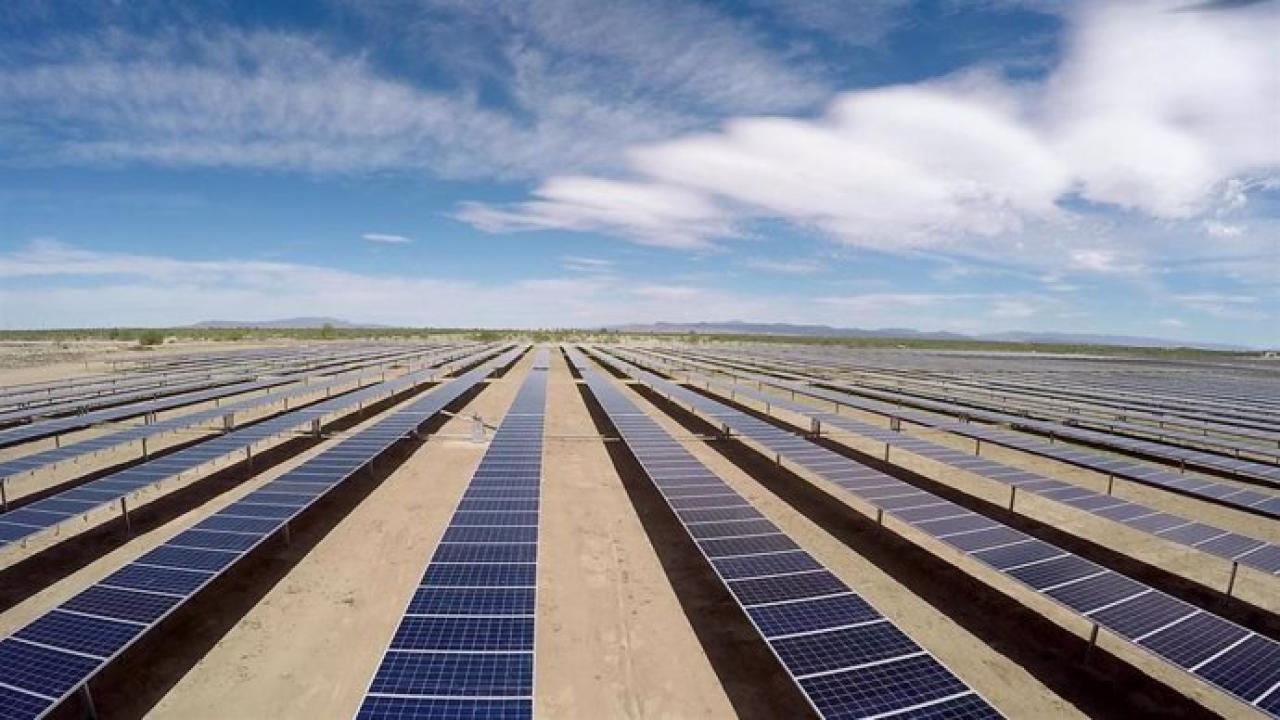
Behind it is the collapse of hydroelectric generation due to the drought and the brake on other renewable sources.
It was seen coming: Mexico is set to fail to meet its goal of electricity generation from clean sources in 2024. This is outlined by the worrying decline that, for the second consecutive year, electricity production free of greenhouse gases had in 2023.
Last year this fell 8.2% to 85.5 gigawatt hours (GWh), with which its share in total generation (which amounted to 351.7 GWh) fell from 27.5% to 24.3% of according to the figures from the National Electrical System Development Program (Prodesen) 2024-2038, published by the Ministry of Energy (Sener) on the last day of last May.
This places it further and further away from the goal of 35% that according to Mexican laws it should reach in 2024, based on what was established in Mexico's ratification of the 2016 Paris agreement. In 2022, clean generation had also fallen 2 .7% to 93.2 GWh.
According to the third transitory article of the Energy Transition Law “the Ministry of Energy will set as a goal a minimum participation of clean energies in the generation of electrical energy of 25% for the year 2018, 33% for 2021 and 35% for 2024 ”.
According to the data updated by Sener in the latest edition of Prodesen, none of the intermediate goals stated in the law were met.
In 2018, 69 GWh of clean electricity was produced, which represented 22.1% of the total generation and in 2021, production was 98.8 GWh, which had a contribution of 29.3%, the highest achieved to date .
Clean electricity is considered to be that produced from sources that do not emit gases that promote global warming, such as CO2 or methane, regardless of whether they are renewable or not.
Renewable sources include hydraulic, geothermal, wind, photovoltaic and bioenergy sources. Non-renewables basically cover nuclear and efficient cogeneration.
In 2023, the former contributed 19.7% of the total generation and the latter, 4.6%.
Hydroelectric collapse
The fall in clean generation in 2023 is behind the 42% drop in hydroelectric production, which went from 35.6 to 20.6 GWh, which caused its contribution to go from 10.5% to 5.9% of the national electrical flow.
The collapse coincides with the deepening of the drought that is plaguing the national territory and highlights the fact that, according to Mexican legislation, the use of water for human consumption has priority over the generation of electricity.
But the impasse in the growth of the generation capacity of other renewable sources that could fill the gap left by hydroelectric plants - managed mainly by the Federal Electricity Commission (CFE) - also takes its toll.
Underutilized potential
It is worth remembering that the government of President Andrés Manuel López Obrador froze the application of the 2013 energy reform, which canceled the long-term electricity auctions, which between 2016 and 2018 became important drivers for the expansion of electricity capacity. wind and photovoltaic generation.
Through these contests, the CFE's basic supply subsidiary agreed to purchase energy from generators that competed for contracts by offering lower prices.
Added to the cancellation of these market promotion instruments is the regulatory lag. Private generators have denounced that the Energy Regulatory Commission (CRE) slowed down the issuance of permits for the entry into operation of new plants, arguing that capacity had grown in a disorderly manner in the past.
The correlate of this situation is a much slower growth in wind and solar generation capacity and a discrete growth or, outright, stagnation in their contribution to national generation.
For example, in 2023 wind generation grew just 1.9% to 20.7 GWh, meaning its share, in fact, fell from 6% to 5.9%.
Delay in solar energy
At the end of May, Héctor Treviño, executive director of the Mexican Wind Energy Association (Amdee), said that due to the lack of permits and insufficient capacity for energy transmission, there are 30 wind farms in Mexico with a combined 5,000 megawatts that They can't start.
Regarding photovoltaic generation (including distributed generation), it registered a growth of 14.8% to 23.3 GWh, which allowed it to improve its participation from 6 to 6.6% of the total energy produced in the country.
In 2022 this source had remained stagnant and its share had actually fallen slightly from 6.1 to 6%.
Sener itself projects that solar energy will be the fastest growing, driven in part by the growth of distributed energy.
According to the Electricity Forecast published by the agency in February, the set of new large installations and distributed generation will contribute 39.76% of the capacity additions between 2023 and 2037.









